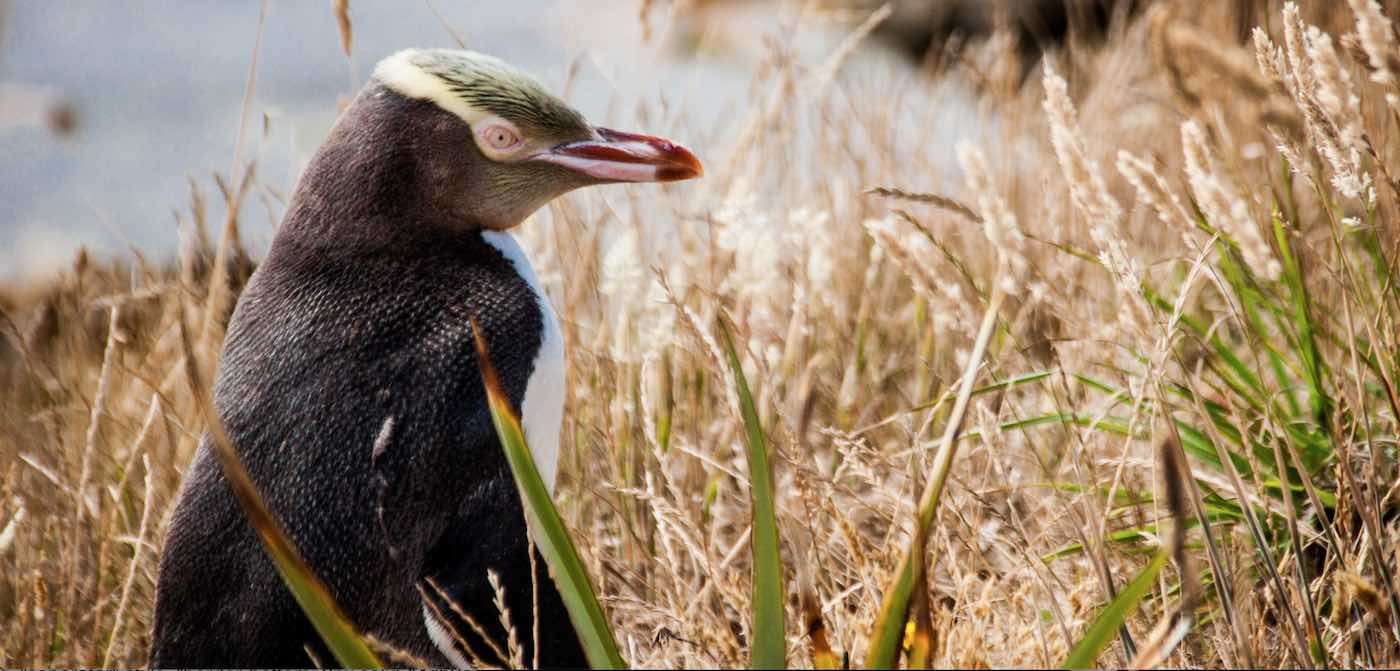World's Longest Wildlife Bridge Could Cross the Mississippi, So 'Buffalo Can Roam'
The Bison Bridge Foundation is trying to turn an I-80 bridge over the Mississippi into the largest wildlife crossing on earth.

Despite the amount of cuts, poo, and "flipper bashing," New Zealand veterinarians are enduring it all to keep an endemic penguin species alive on their beautiful South Island.
An endangered species, and one of the rarest penguins in the world, the yellow-eyed penguin, or "Hoiho," which means "noise shouter" in MÄori, numbers between 4,000 to 5,000 birds.
For years a pair of facilities in Dunedin near the extraordinary Otago Peninsula, The Wildlife Hospital and Penguin Place, have been treating and releasing birds back into the wild.
"When I see the difference we're making, especially for the hoiho, it's a species I'm so passionate about and just being able to work with these birds and get them back into the wild, that's actually the best part of the job," says Dr. Lisa Argilla, a veterinarian at the Wildlife Hospital, to BBC Travel.
4,000 to 5,000 isn't so low, but when one considers there are only 265 known breeding pairs, the fact that 95% of injured hoiho that arrive in the hospital recover to be released again highlights the two teams' extraordinary contribution to national Kiwi conservation.
A post shared by Penguin Place (@penguin.place)
"If Penguin Place wasn't here, I could almost guarantee that the population would be functionally extinct," said Jason van Zanten, conservation manager at Penguin Place, again to the BBC.
Before the Wildlife Hospital opened in January of 2018, injured penguins found by Penguin Place, which has been operating since the '90s, had to be shipped to the North Island for care. The immediate proximity with which hoiho can be treated has drastically helped the population.
A post shared by Penguin Place (@penguin.place)
However as the world's first entirely tourism-funded conservation reserve, Penguin Place suffered greatly during the COVID-19 measures imposed by the government, and now has only enough residual capital to survive the next few months. With the return of warmer weather, Penguin Place needs a simultaneous return of tourists, or it will be forced to shutter its doors and leave the penguins to their own devices.
It's not a bad trip to be fair. The Otago Peninsula's wild coastlines, towering headlands, and sheltered fjords are home to a rich variety of natural scenery and animals, much of which remains conserved due to tourist dollars.
A post shared by Penguin Place (@penguin.place)
Until the tourists return for tours of the coastal reserve, Penguin Place has turned to donations, which you can contribute to on their website along with planning a tour.
(MEET a few of these Kiwi penguins in the video below.)
SHARE This Fascinating Story With Friends on Social Media…
Be the first to comment